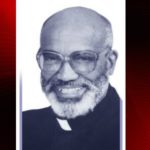The Navajo Nation is making moves to join a growing number of tribes that have already respectfully, but conclusively, shown Wells Fargo the door.
By Frances Madeson
Yes! Magazine, Feb 02, 2017 —

Photo by Moyan Brenn / Flickr.
Like the call and response in Lakota ceremonial prayer songs, tribes are answering the Standing Rock’s Sioux plea for all of Indian Country to move its money out of banks that have invested in the Dakota Access pipeline [DeFund DAPL] and help further destabilize the pipeline’s already shaky financing.
“Many people are, rightfully, afraid that executive support [President Trump’s] now means that the pipelines are full steam ahead,” said Melanie Yazzie, co-founder of The Red Nation, an activist coalition dedicated to the liberation of Native people from capitalism and colonialism. She views divestment as obstruction—the good kind—something akin to water protectors locking down on construction equipment and as a continuation of the widespread resistance that has united under the cry of #NoDAPL.
“The investors and financiers will not move forward if the projects are deemed financially unfavorable,” Yazzie said. “We must continue to deny settlers their desired profits, profits they reap from colonizing our non-human relatives—the land and water.”
That is the hope of a growing cohort of tribal leaders, activists, researchers, and strategists who have come to see divestment, which is catching on all across Indian Country, as a winning tactic in a wider strategy of non-cooperation. It’s a cohort that at first glance appears to have some strange bedfellows: radical academics and Wall Street professionals.
Since last August, when the Standing Rock Sioux severed their own relationships with DAPL-invested banks, financial adviser Lynn Rapp has been fielding a steady stream of questions from her tribal clients. She is managing director of Seacrest Investment Financial Management in Buffalo Gap, South Dakota.
“Tribes want to divest themselves as external supporters,” explained Rapp, who is Oglala Sioux. “It speaks really highly to their level of long-term commitment to the cause.”
The cause is mni wiconi, Sioux for “water is life,” or as some are now translating it: “water is alive.” And as Rapp sees it, it’s also about securing Indian rights.
“American Indians have to be able to stand up for what they believe about the environment, the economics of their time, and the social impact of situations like this,” she said.
Even in very poor nations like the Navajo, where 47 percent of the population lives below the poverty line, there are grassroots efforts to help move the divestment needle. Duane “Chili” Yazzie, president of the Shiprock Chapter of the Navajo Nation, has referred to the #NoDAPL struggle as the “ultimate stand for Mother Earth.”
He’s advocating for Speaker Lorenzo Bates, President Russell Begay, and Vice President Jonathan Nez to divest from Wells Fargo and all other DAPL-invested banks, beginning with the more than $2 billion in the Nation’s Permanent Trust Fund. In mid-December, the Shiprock Chapter and the Northern Navajo Agency Council passed resolutions that point to the dishonor and indignity of using Navajo money to lay waste to Mother Earth.
“The Diné people are the caretakers of the Earth in concert with people of good hearts around the world,” he explained. “I want to see my nation put some serious substance behind the verbal expressions of support for the Standing Rock Sioux.”
Or, as he put it more plainly: “Money talks.”
If this effort succeeds, the Navajo Nation will join a growing number of tribes that have already respectfully, but conclusively, shown Wells Fargo the door.
The Nez Perce Tribe in Idaho and the Mille Lacs Band of Ojibwe in Minnesota have already severed fiscal ties, while the Alliance of Colonial Era Tribes, a consortium of tribes located along the East Coast, has indicated some of its members may soon do the same.
Of the U.S. banks, Wells Fargo is the second-largest financier of DAPL parent Energy Transfer, having committed $467 million to the family of companies, according to researcher Hugh MacMillan of Food & Water Watch. That includes $120 million directly to DAPL. So far, Wells Fargo has borne the brunt of divestments from Indian Country. (Citibank is the largest DAPL financier, having committed $521 million in credit to Energy Transfer, including $235 million directly to DAPL.)
In a written statement, Wells Fargo said it has been “serving Native American governments and communities for more than 50 years.” It provides financial services to more than 200 tribal and Native entities in 27 states, including many tribal community development projects. Over the past three years, the bank says, it has granted tribes $11 million, including $3 million for scholarships and educational programs though the American Indian Graduate Center.
Despite the longstanding relationships, what’s happened with DAPL changed everything for the tribes.
On the night of Nov. 20, when law-enforcement officers used tear gas and water cannons as part of their assault on unarmed water protectors, Janene Yazzie, a research associate in the Department of Soil, Water and Environmental Science at the University of Arizona, decided she could not remain silent. Armed with the Shiprock resolutions, she’s been actively lobbying the executive and legislative branches of Navajo Nation to divest.
“As a Navajo Woman,” she wrote in an email, “watching the videos on social media disturbed me to my core. They captured proof that the so-called ‘Indian Wars’ have never ended but are, rather, coming to a culmination.”
Continued banking with DAPL-invested institutions “fuels systemic injustice,” in her view, and puts “the blood of our relatives on our own hands.”
In Idaho, acting quickly after the Standing Rock Sioux’s call for divestment, the Nez Perce tribe withdrew millions from Wells Fargo on the grounds that the bank’s investment in DAPL was “inconsistent with the views and policies of the Nez Perce.” Mary Jane Miles, chair of the tribe’s executive committee, explained why they divested:
“I feel that tribal nations need to support each other in their efforts to remind the big companies of our stewardship responsibility. Our voice needs to be heard, and if there is any way that we can enhance our position we need to do so. The Nez Perce tribe supported their sister nation in other ways as well, such as tribal members voluntarily traveling to the site to camp in the bitter cold. The protest was well warranted in our worldview and was supported in all the ways we felt was necessary,” Miles wrote.
Rudolph Ryser, a member of the Cowlitz Tribe and board chair of the Center for World Indigenous Studies, a research and education organization, wants Indians everywhere to follow the lead of the Nez Perce.
“It is no longer tenable for the leaders of American Indian [tribes], Canadian Indian [tribes], and Indian leaders throughout the Americas to operate as if the leaders of hemispheric nations can or will act in responsible ways toward the indigenous people or the living earth. Fourth World nations in the United States, Europe, Asia, and the Pacific are in a strong position to apply pressure on investors in the Dakota pipeline banks.”
Ryser hopes to see tribes act in unison for greater impact, banding together to “demand investment changes or withdraw funds.”
The nuts and bolts of divestment are easy to accomplish, Rapp explained.
“It’s very simple,” she said. “Establish an account with another financial institution that meets your political and social needs. The tribal council signs the transfer form, and it’s done. The new institution will request the funds be transferred, and that’s all there is to it.”
Lists of non-DAPL invested banks are being circulated, and Native-owned banks are being promoted as alternatives to the 17 U.S. banks invested in DAPL.
The Standing Rock Sioux continue to encourage and applaud divestment. On Jan. 16, Indigenous Environmental Network released a focused statement on recent efforts to influence DAPL banks to renegotiate or cancel their loans. It’s likely to rev up the divestment engine. A billboard in Times Square broadcasts the rolling tally of self-reported dollars already divested (more than $55 million now); it’s also reported on the DeFund DAPL website.
Meanwhile, cities of varying sizes are pursuing divestment, including Seattle, where a final vote is scheduled Monday. It would make Seattle the first municipality to divest over Dakota Access, but it’s a trend that’s occurring in the context of a worldwide fossil-fuel divestment movement. According to a recent Arabella Advisors report, “The Global Fossil Fuel Divestment and Clean Energy Investment Movement,” as of December 2016, institutions and individuals with assets over $5 trillion have committed to divest from fossil fuels.
Longtime White Earth Ojibwe activist Winona LaDuke of Honor the Earth wrote a letter to Canadian energy giant Enbridge, noting that the company hasn’t yet put in some $1.3 billion toward the pipeline.
“They’re sitting on it,” she said. “This is the pipeline that doesn’t have all its needs for capital met.”
Native prophecies speak of a choice, LaDuke said, “between a well-worn, scorched path, and a new path, which is green. This scorched path is a path of violence, a path of billions of dollars of oil infrastructure we don’t need, and the new path is the path of peace.”
“And that’s what this moment is,” she continued after a pause. “We can ensure we have a future where they can’t harm us all.”
Frances Madeson wrote this article for YES! Magazine. Frances is a Santa Fe-based freelance journalist and the author of the comic novel Cooperative Village.










